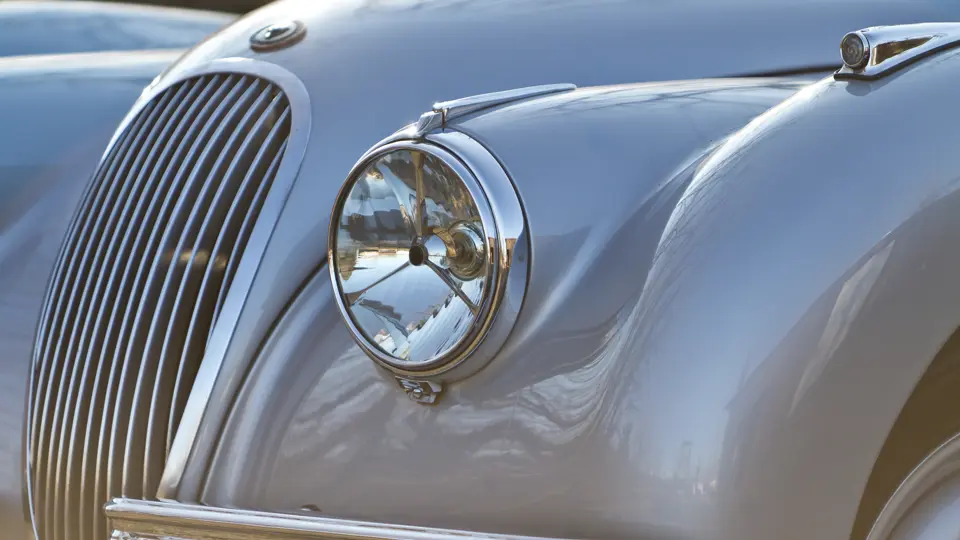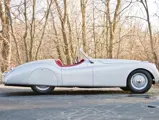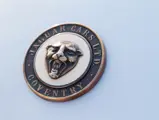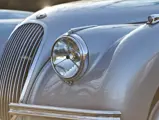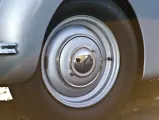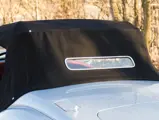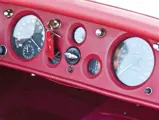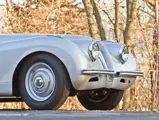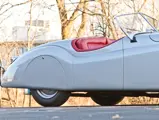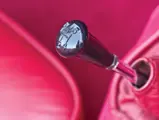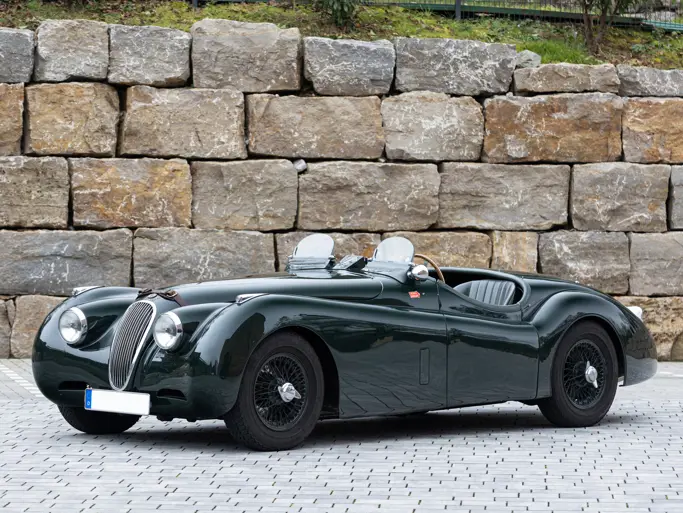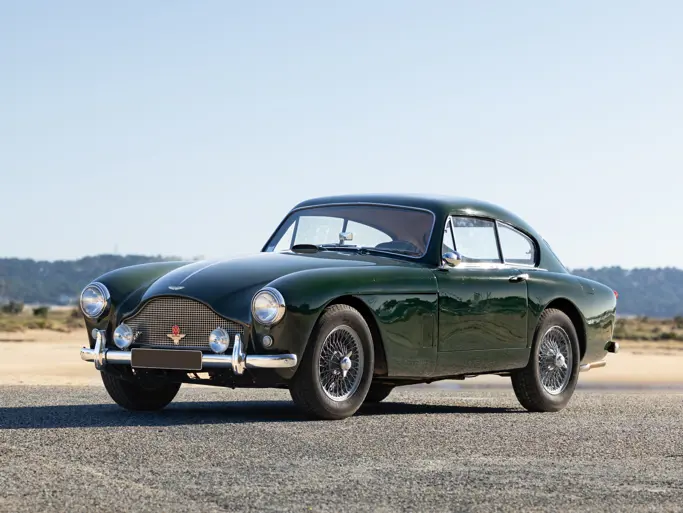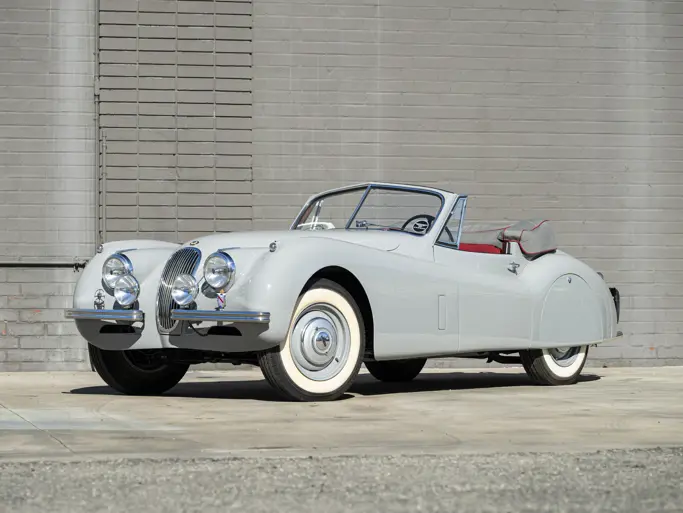160 bhp, 3,442 cc dual overhead camshaft inline six-cylinder engine, four-speed manual gearbox, independent front suspension with transverse wishbones, elongated torsion bars and anti-roll bar, rigid rear axle with semi-elliptic leaf springs, and hydraulic four-wheel drum brakes. Wheelbase: 102"
• Known history from new
• Extremely rare alloy body with early racing provenance
• Jaguar Daimler Heritage Trust certified
• Awarded 98.5 points in JCNA judging
The Jaguar XK120 was initially intended as a design exercise, but the response was so strong when it was shown at the London Motor Show that Sir William Lyon immediately announced production of the model. Production was slow at first since the aluminum-alloy bodies were constructed by hand. By 1950 Jaguar aimed to reduce production delays by producing the bodies out of steel. It is interesting to consider that initially the firm only intended to produce approximately 200 examples, but demand was so strong, even at a cost of almost 1,000 pounds sterling, that over 12,000 would ultimately be sold. Of that relatively large production, only 242 of the early examples were bodied with aluminum alloy, which put them in a class of their own. Of those, 184 were left-hand drive and 58 right-hand drive. In total, about 175 are known to exist today.
Chassis 670124 is one of that minuscule number of alloy cars and one of three that were delivered new to the well-known Los Angeles distributorship owned by Charles Hornburg in February 1950. The cars were converted into race cars, driven by Hornburg himself, Phil Hill and a third driver, and raced at Riverside. In the early 1970s, this particular car was purchased by Chester Simpson and later by noted Jaguar collector George Stauffer of Wisconsin. By this time the car was not in running condition, and Stauffer had intentions of performing a restoration, which never began. The current owner tried and failed to purchase 670124 a number of times, and in 1981 Stauffer finally relented and parted with it.
When the new owner began performing the restoration, he noted a number of modifications that were indicative of the car’s racing past. Of note are the six holes in the cowl for the mounting of a Brooklands-style windscreen and that the fuel filler neck was changed to the passenger side from the driver's side. There were also a number of parts that had been stripped for racing and then replaced with later parts from a steel-bodied car, including the grille, bonnet, bonnet hinges, windscreen and wiper arms.
The owner opted to restore the car to vintage racing specifications and used the alloy-bodied XK120 at the Brooks Stevens museum in Milwaukee, Wisconsin as a reference. The engine was completely rebuilt by John Hajduk of Motorkraft in Noblesville, Indiana and was left in stock configuration. The restoration work was performed by Skip McCabe of Mundelein, Illinois. Original Brooklands racing screens and cowls were sourced, and a roll bar and fire suppression system were installed to comply with racing regulations. An aluminum tonneau and nacelle headrest were also fabricated. When the work was completed the Jaguar was raced at the Blackhawk Farms track in 1992 and was raced at 16 subsequent events through 1999.
It was now time for 670124 to be restored again, but this time it was painstakingly returned to its original specifications using Ian Furness's alloy XK120 as a reference. Of the many items unique to the early alloy-bodied cars are the earlier-style bonnet hinges, an original unrestored alloy XK120 grille and an original windscreen. These windscreens have unusual large rubber grommets at the base, and the owner went to the trouble of having exact replicas made for his restoration. Other alloy-only parts that were sourced include a convertible top frame, high-output generator, glass brake fluid reservoir, horn relay, mushroom-top gearshift knob, rearview mirror and license plate frame. For the sake of practicality, the frame, suspension parts, brake backing plates and several others were powder coated instead of painted. The reproduction exhaust system was made of stainless steel, DOT 5 brake fluid was used, and the original brake shoes were lined with carbon fiber to eliminate the stopping issues that plagued these cars.
While restored to an extremely high competitive standard, this car does retain some signs of its racing past, including the cowl holes for the racing windscreens, roll bar attachment points on the frame, louvered bonnet with strap, relocation of the coil for quick changing and period high-performance spark plug ends. The current mileage is just under 37,800 miles, which the owner believes to be original due to a note he found inside the speedometer dated from 1965 and indicating just under 20,000 miles at that point. The note was returned to its home inside the speedometer. This would indicate that the mileage covered in the period following until it was taken off the road was approximately 15,000 miles.
This highly desirable alloy-bodied Jaguar XK120 roadster has received a number of awards in the time it was shown and is still in show-ready condition. The Jaguar Daimler Heritage Trust certificate verifies that this example is numbers-matching and that the original color was Birch Grey, which is the shade it wears today. During the process of compiling his extensive history on the car, the owner had a chance to speak with Mr. Phil Hill before his passing, and Hill remembered the days of racing in the XK120s fondly, noting that he regularly beat Hornburg when they were thrashing around the track together. The owner also still has the California "black plates" from when the car was in the ownership of Mr. Simpson, and those will be transferred with the car as well. The alloy-bodied Jaguar XK120 is a highly collectible prize that would be welcome in virtually every car collection on the planet. Approximately 25% of the alloy examples are believed to have survived; they are highly coveted by a legion of collectors and enthusiasts alike, who will forever ensure that these cars retain an important place in the automotive pantheon.
Please note that this car is titled by its engine number.
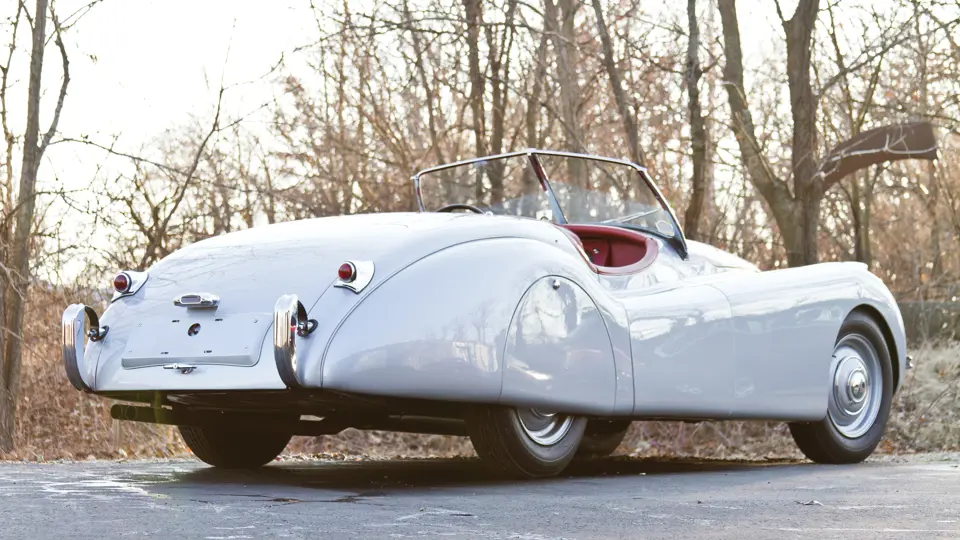
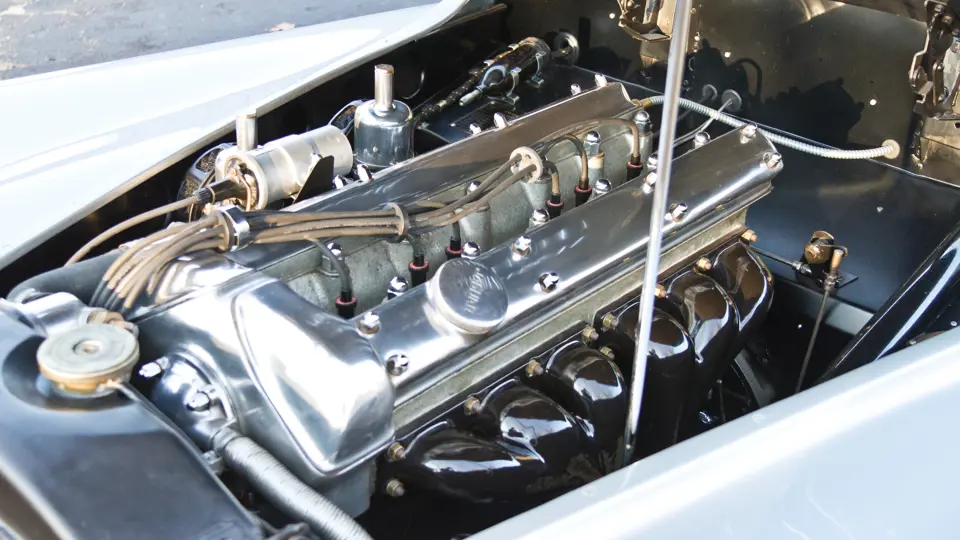
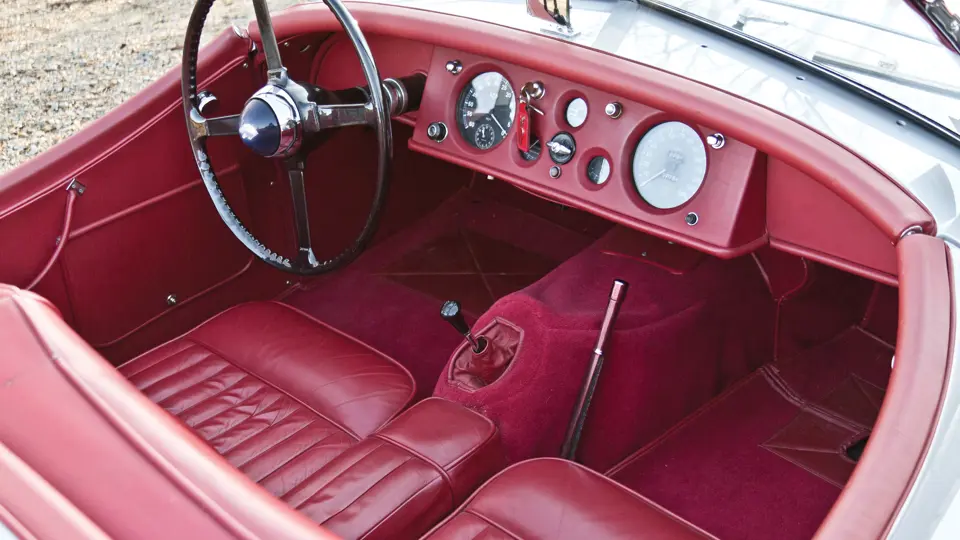

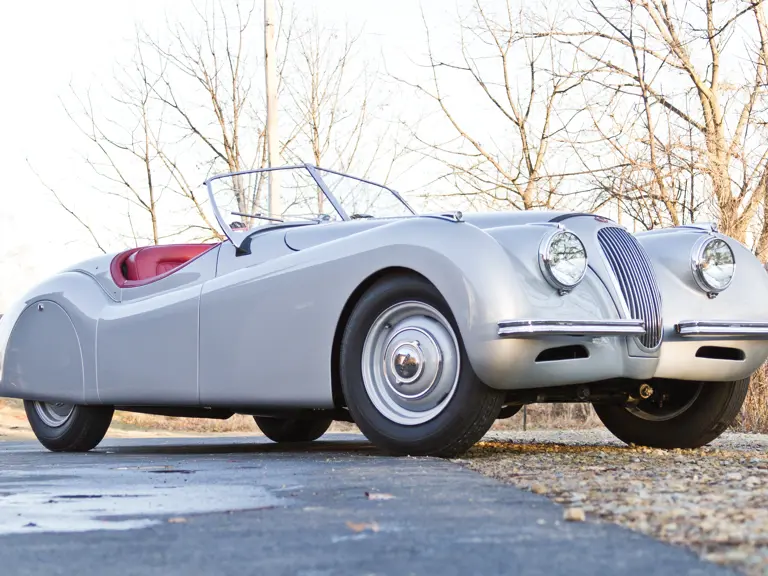

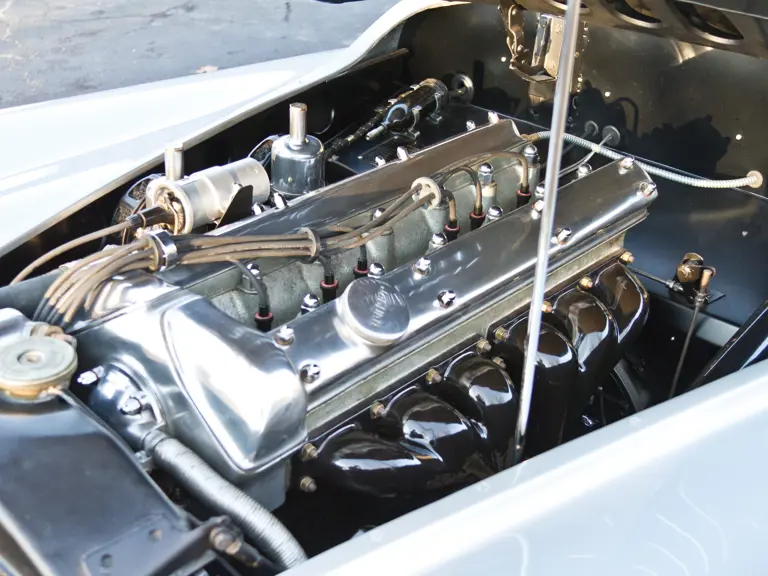


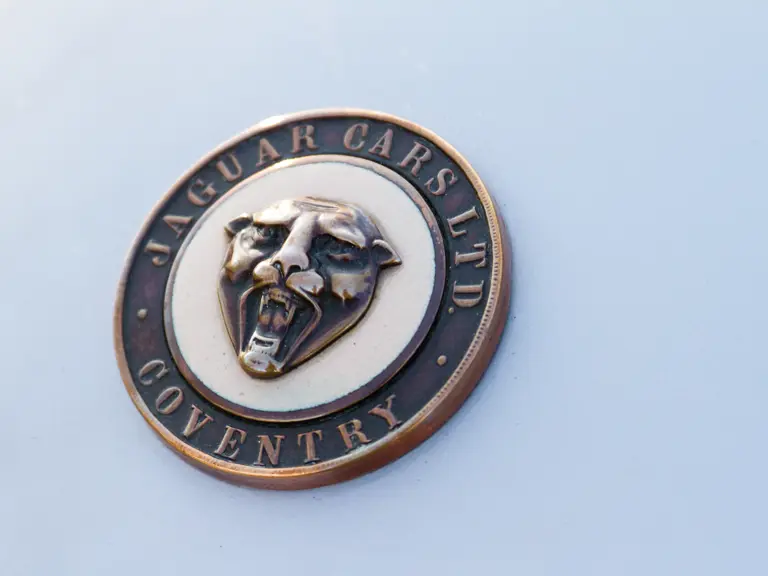
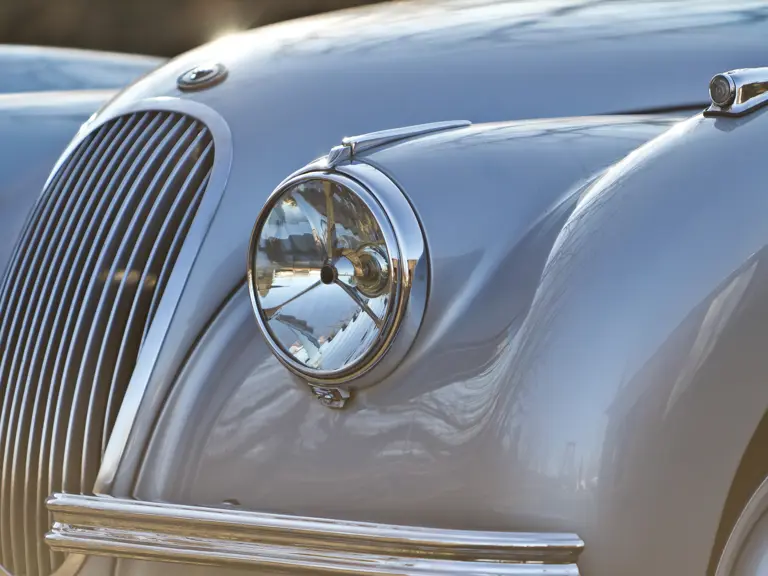
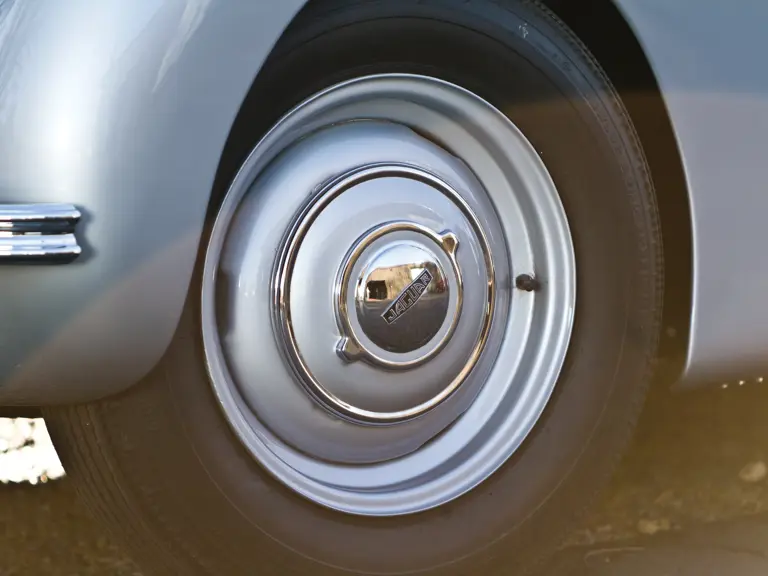
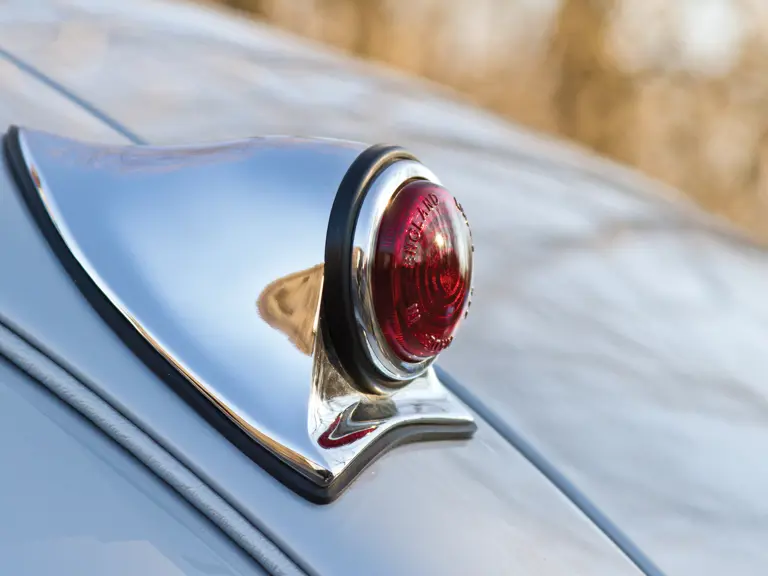
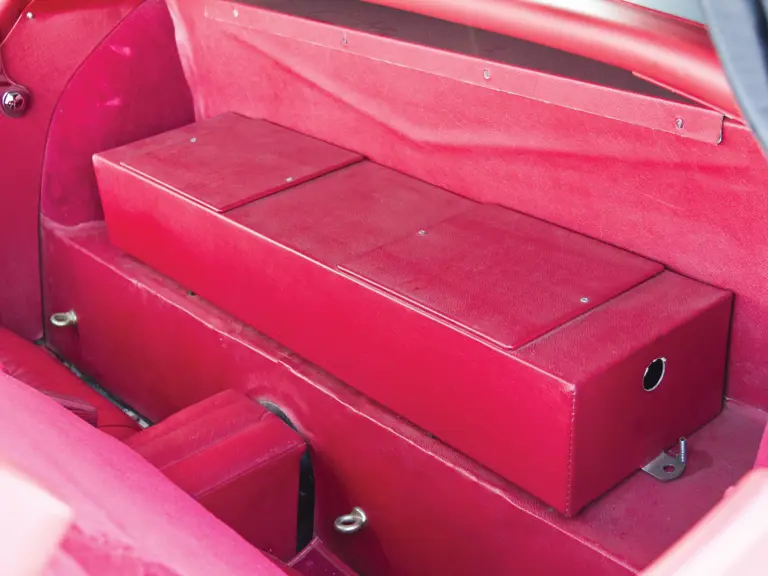
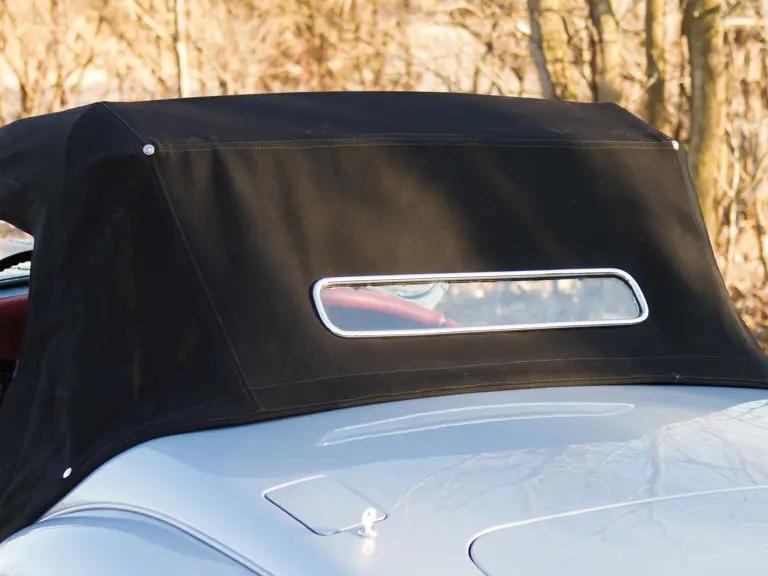


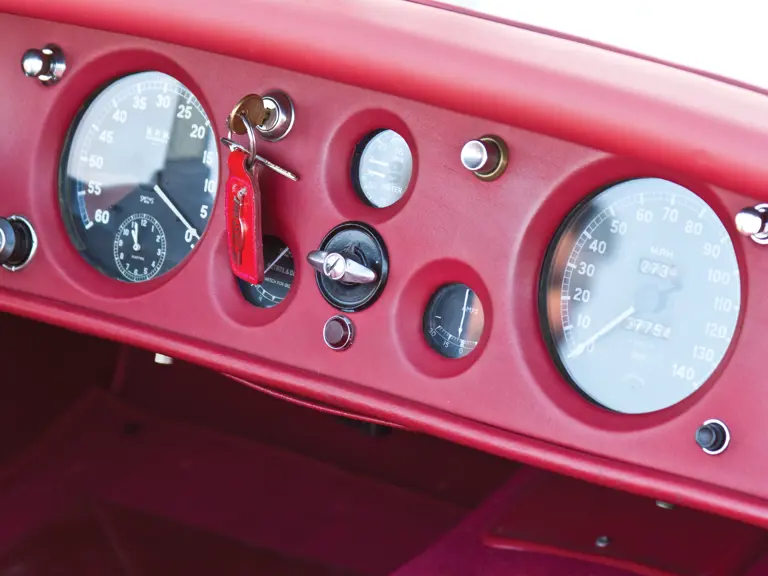


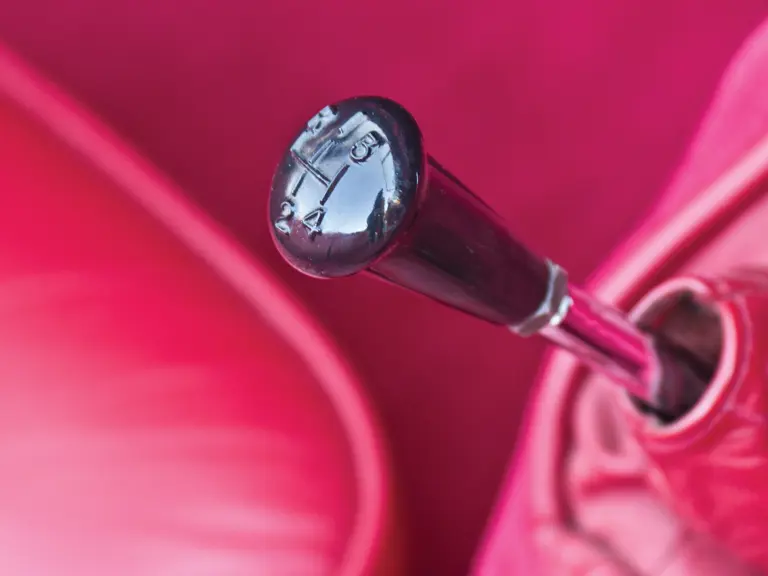
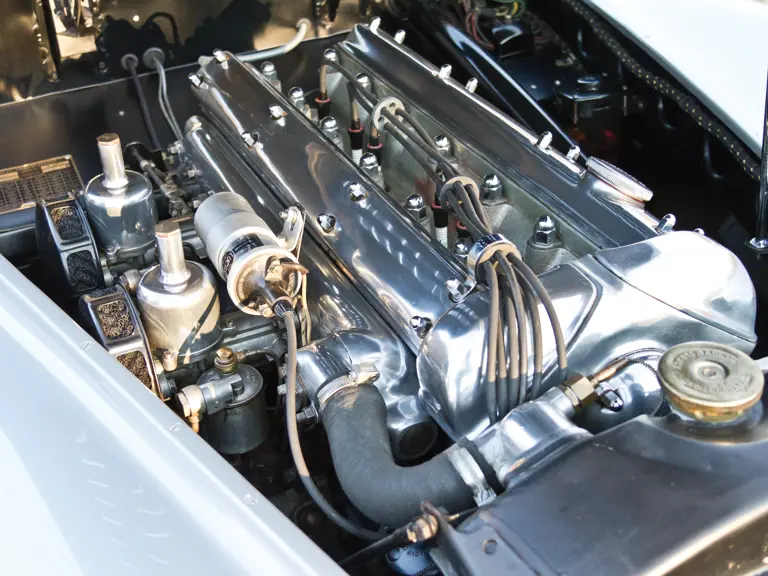
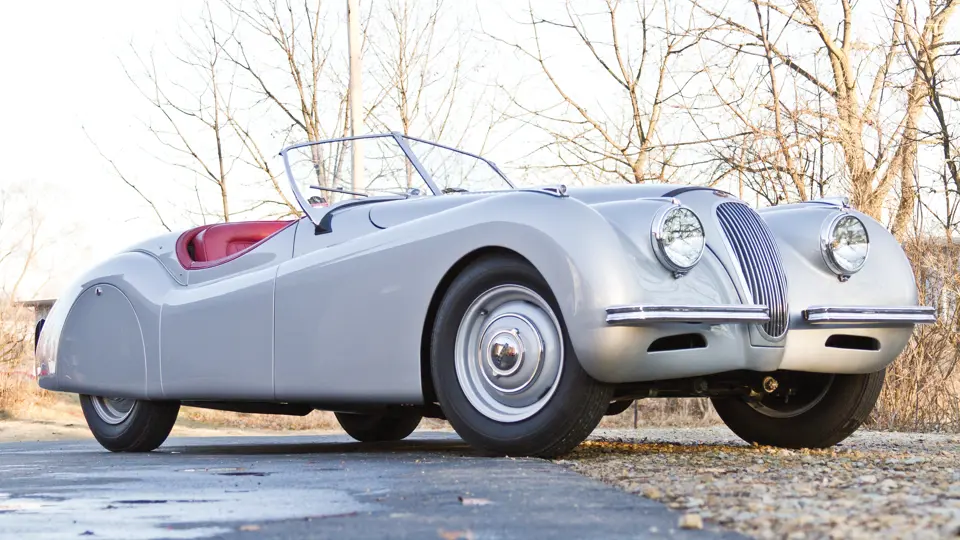
 | Amelia Island, Florida
| Amelia Island, Florida


